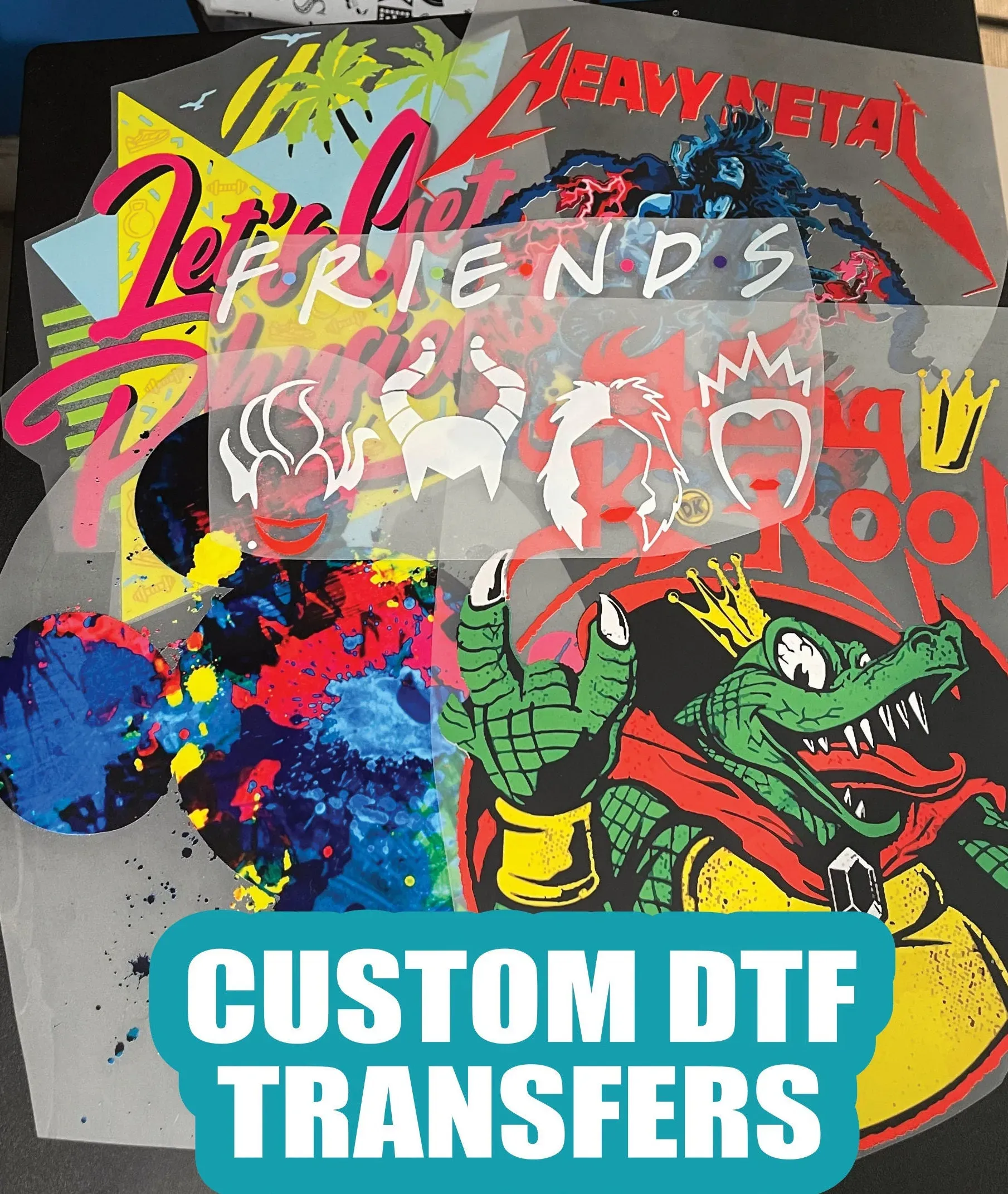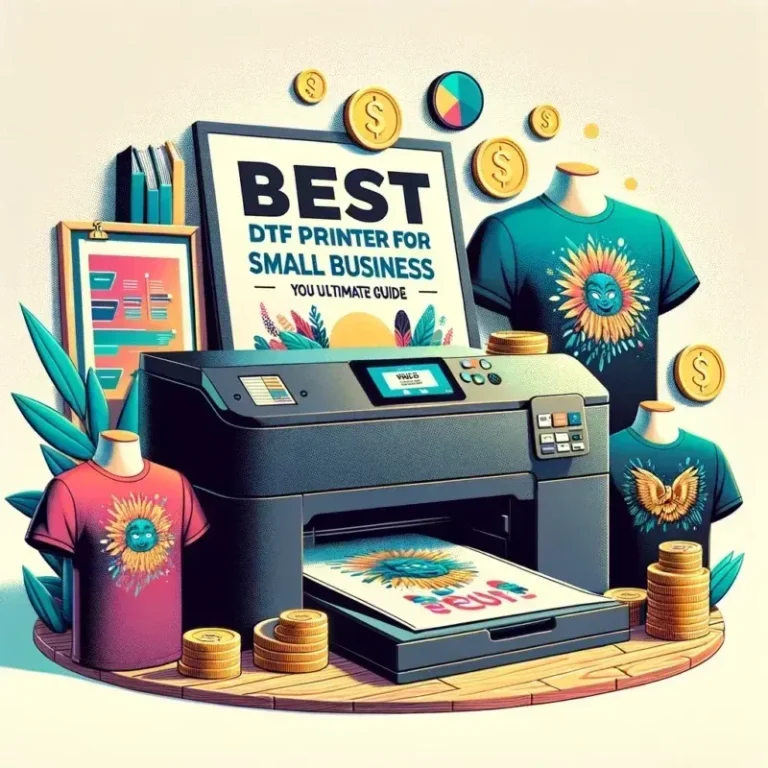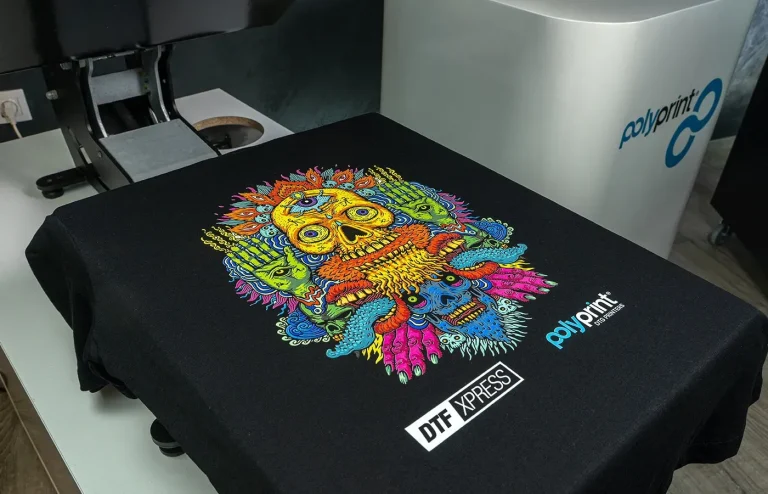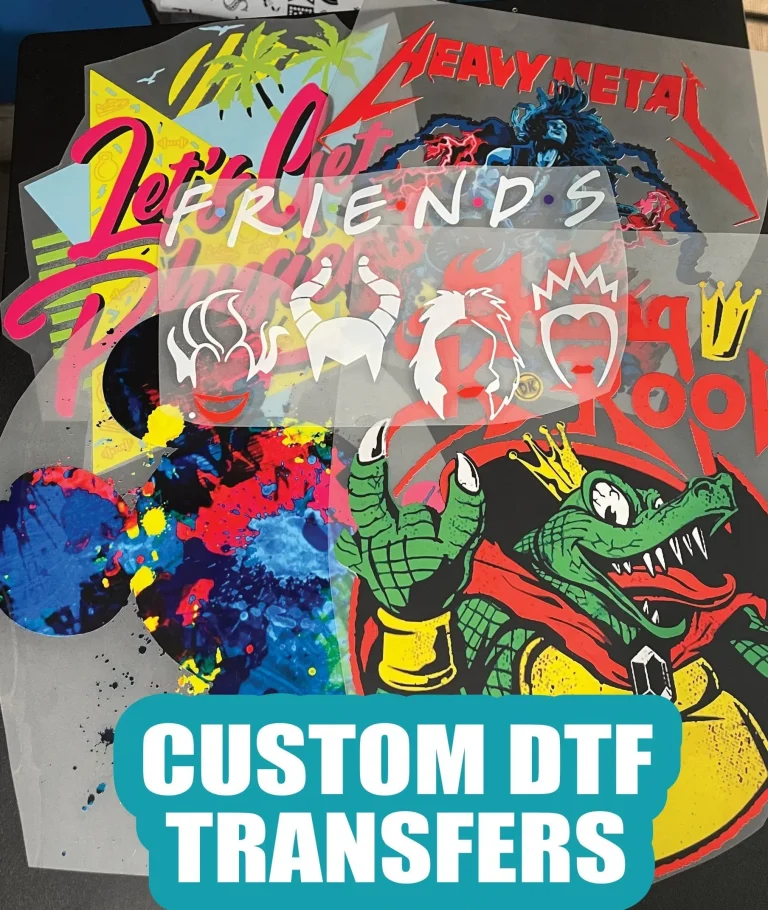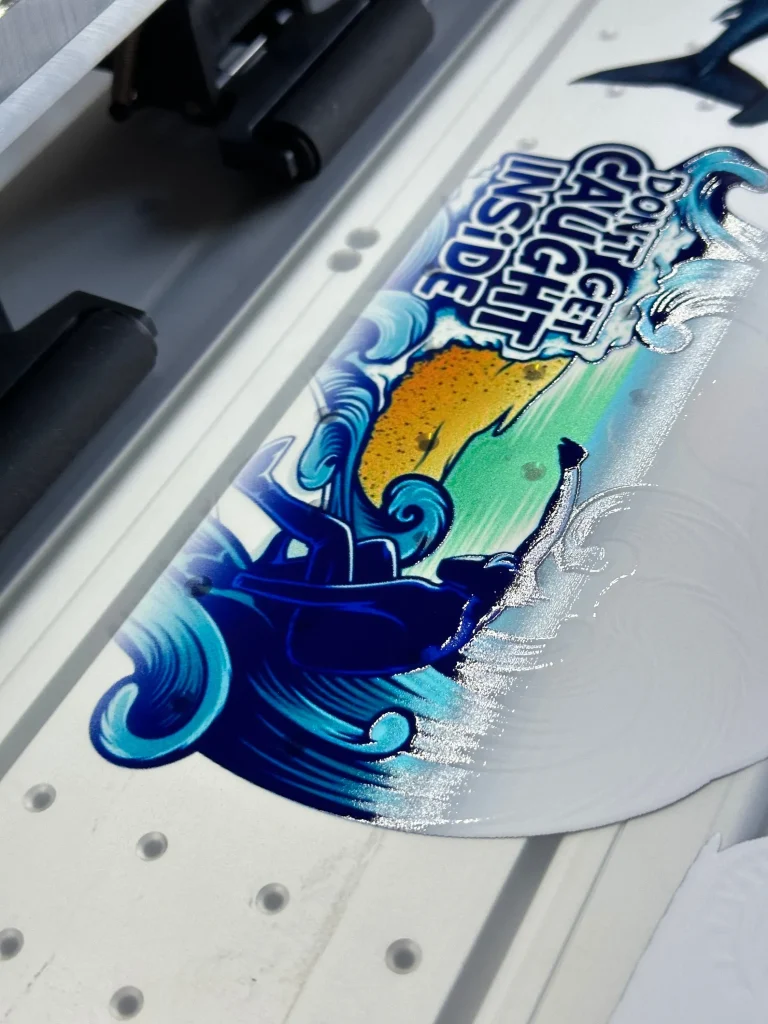DTF Transfers: Creative Techniques and Tips for Success
DTF transfers, or Direct to Film transfers, have quickly become a key player in the realm of custom textiles and apparel. This innovative printing technology allows for intricate designs to be applied to fabrics with remarkable precision and vibrancy. By leveraging advanced DTF printing techniques, users can produce stunning graphics that are perfect for a variety of materials, from sporty jerseys to casual wear. In this article, we will explore creative DTF transfers tips that can elevate your projects, including essential information on DTF transfer materials and effective design practices. Whether you’re a novice or an experienced printer, mastering DTF transfers can transform your creative output, making your designs truly stand out in the marketplace.
Exploring the realm of Direct to Film (DTF) applications reveals a dynamic approach to transferring designs onto fabric. With its groundbreaking techniques, DTF printing enables creators to print colorful artwork directly onto a unique film before pressing it onto garments. This method not only enhances the quality of the designs but also simplifies the overall process for those in the custom apparel industry. By diving into various DTF transfer methods and understanding the nuances between materials, users can unlock a plethora of design opportunities. From selecting the right transfer mediums to mastering application techniques, becoming proficient in these innovative processes can significantly enrich your creative endeavors.
The Importance of DTF Printing Techniques
When diving into the realm of DTF printing, understanding its core techniques is essential for achieving outstanding results. The DTF printing process allows for a myriad of creative designs to be produced with incredible detail and accuracy. By mastering techniques such as color layering, gradient blending, and texture creation, businesses can elevate their branding and product offerings. These techniques not only enhance the overall aesthetic appeal but also contribute to the durability of the prints, ensuring designs endure through multiple washes and wear.
Furthermore, embracing innovative DTF printing techniques like digital pre-treatment allows for even more personalization. The ability to apply vibrant colors with precision opens doors for unique creations. For instance, combining DTF with embellishments like glitter or foil can lead to exclusive product lines that catch customers’ eyes, setting one brand apart from the competition. Staying on top of the latest DTF techniques is crucial for any business looking to make a mark in the apparel and merchandise industry.
Choosing Quality Materials for DTF Transfers
Selecting the best materials for DTF transfers is pivotal in ensuring high-quality outcomes. High-performance DTF transfer films are engineered specifically for optimal compatibility with eco-solvent and water-based inks. These films feature exceptional release properties that facilitate a smooth transfer process. By investing in quality DTF transfer materials, businesses can reduce the likelihood of common issues such as fading or peeling, thus bolstering customer satisfaction and their reputation.
Moreover, the choice of inks plays a vital role in the performance of DTF transfers. Water-based inks not only provide vibrant colors but also support eco-friendly practices, aligning with the growing consumer preference for sustainable products. It is essential to verify that the inks being used are compatible with both the transfer films and the fabric substrates. This alignment creates a cohesive system where each component works together to deliver stunning and durable results.
Mastering the Pre-treatment Process for DTF Transfers
The pre-treatment process is a crucial step that should never be overlooked when working with DTF transfers. This preparation significantly enhances the fabric’s ability to hold the transfer, creating a strong and lasting bond. Utilizing pre-treatment solutions can be a game changer—these products effectively improve adhesion, resulting in vibrant, fade-resistant designs. Therefore, adhering to manufacturer guidelines for fabric pre-treatment guarantees optimal results and helps avert potential mishaps like peeling or fading.
In addition to improving adhesion, pre-treating fabrics can also contribute to a professional finish. It helps create an even base for the DTF transfer, fostering a uniform appearance across the design. To perfect your pre-treatment process, consider testing various techniques, such as spray or roller application, to find the method that works best for your specific fabric and transfer combination. Consistency in pre-treatment directly translates to elevated quality in the final product.
Technical Settings for Perfect DTF Transfers
Controlling the technical settings of your heat press is another key factor in achieving flawless DTF transfers. The ideal temperature—between 305°F and 320°F—along with appropriate pressure settings (40-60 psi for 10-15 seconds) must be meticulously optimized. Variability in fabrics can affect these parameters; for instance, thicker materials may require adjustments to ensure proper adhesion and prevent damage to the fabric. As each project varies, testing different settings is essential for perfecting your DTF application process.
Moreover, monitoring your heat press performance is crucial. Over time, the heat accuracy may fluctuate, impacting transfer quality. Regular maintenance of your equipment, combined with proper temperature and pressure calibration, ensures consistent results. Proper technical settings, when executed correctly, set the stage for vibrant, long-lasting DTF transfers, reinforcing the importance of a meticulous approach to this aspect of the DTF printing process.
Creative DTF Transfers Tips for Designers
When working with DTF transfers, creativity is limitless, and it is essential to tap into various innovative ideas to stand out. One unique tip is to consider layering techniques. By strategically overlapping colors and textures, you can achieve stunning visual effects that breathe life into your designs. Another potent suggestion is using transparency layers or gradients in your design software, making the artwork more dynamic and eye-catching as it interacts with different fabric colors.
Moreover, embracing seasonal trends or cultural themes can inspire exclusive design collections. Whether creating festive apparel or designs that celebrate local art and culture, aligning your DTF transfers with current trends not only attracts customers but creates buzz for your brand. Stay engaged with your target audience through social media to gather insights on what styles resonate with them, and do not hesitate to experiment with new aesthetic approaches in your DTF creations.
Post-Processing Care for Longevity of DTF Transfers
Post-processing care is crucial in extending the life of your DTF transfers and ensuring customer satisfaction. Allowing the transfer to cool before peeling off the film can significantly enhance adhesion, preventing premature lifting of the design. Additionally, advising customers on proper care instructions—such as washing the garments inside out and avoiding bleach—will help maintain the integrity of the prints, minimizing fading and preserving vibrancy over time.
Incorporating labeling or care tags that provide specific post-processing instructions can also enhance the perceived value of the product. A detailed approach to care recommendations fosters trust and demonstrates professionalism to customers. In the fast-paced world of custom merchandising, maintaining the visual appeal and quality of your DTF transfers through diligent post-processing care is essential for repeat business and satisfied clientele.
Frequently Asked Questions
What are DTF transfers and how do they work?
DTF transfers, or Direct to Film transfers, involve printing detailed designs onto a specialty film, which is then heat-pressed onto various fabrics. This innovative DTF printing technique ensures vibrant colors and intricate details are transferred onto the material, making it ideal for custom apparel.
What materials are best for creating high-quality DTF transfers?
To achieve the best results with DTF transfers, use high-quality transfer films and compatible inks, typically eco-solvent or water-based. These DTF transfer materials directly influence the durability and wash resistance of your designs, so ensure they work well together for optimal performance.
What tips can improve my DTF printing techniques?
For effective DTF printing techniques, focus on proper fabric pre-treatment, control heat press temperature and pressure settings, and prepare your designs with high-resolution vector graphics. Adding an underbase layer for darker fabrics can enhance color vibrancy in your DTF transfers.
How do I ensure my DTF transfers adhere properly to different substrates?
Testing DTF transfers on various substrates is crucial, as compatibility can vary with different fabrics. This step helps determine the best pre-treatment methods and optimal heat settings for each material, ensuring the adhesion of your DTF transfers is effective.
How should I care for garments with DTF transfers?
After applying DTF transfers, allow them to cool before peeling off the film. For washing, always turn garments inside out and avoid bleach to maintain the longevity of your DTF prints. Proper post-processing care is essential to prolong the life of your designs.
What are the current trends in DTF transfers technology?
Emerging trends in DTF transfers include eco-friendly practices—such as biodegradable films and non-toxic inks—along with customization options for unique designs. Continuous advancements in DTF printing technologies are also enhancing release properties and fabric compatibility, improving overall results.
| Key Concept | Description |
|---|---|
| Introduction | DTF transfers revolutionize custom apparel printing, allowing for detailed designs on fabrics. |
| Understanding DTF Printing | Printing vibrant images on film followed by heat transfer onto fabrics. |
| Choosing Right Materials | High-quality films and inks are crucial for durability and wash resistance. |
| Fabric Pre-treatment | Pre-treating fabrics enhances adhesion of transfers for longer-lasting designs. |
| Temperature and Pressure | Ideal settings range from 305°F to 320°F with pressure at 40-60 psi. |
| Design Preparation | Using vector graphics and white underbase layer improves design quality. |
| Substrate Compatibility | Test transfers on various materials to determine optimal settings. |
| Post-Processing Care | Cool before peeling and wash inside out to prolong transfer life. |
| Emerging Trends | Sustainability, customization, and innovative films are shaping the market. |
Summary
DTF transfers have transformed the landscape of custom printing, offering remarkable flexibility and detail in designs. This innovative method allows artists and businesses to achieve high-quality prints onto various fabrics, ensuring vibrant colors and intricate patterns that can cater to personal tastes and market demands. By mastering the basics of DTF printing and staying informed about trending materials and techniques, individuals can enhance the longevity and appeal of their projects. As the DTF transfer technology evolves, embracing sustainability and customization will only further unleash the potential of this exciting field.

